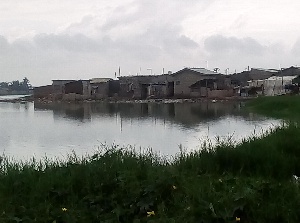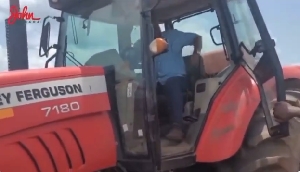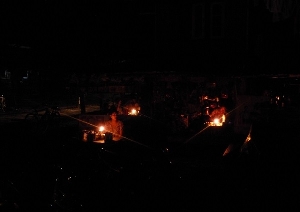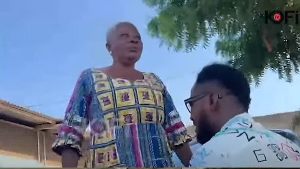 Visible encroachment on the lagoon
Visible encroachment on the lagoon
Glefe is a fishing community located between a stretch of a lagoon and the sea in the Ablekuma West Municipality. It stretches from south of Dansoman to the sea. Most of the people who dwell there are mostly fishers and petty traders.
The slum community has been in the news every rainy season due to flooding in the area. However, a visit to the area has revealed that, the seasonal flooding situation, although natural, is largely induced by human activities in the Glefe township. These bad activities stem from encroachment on the land close to both the sea and the lagoon to poor sanitary conditions in the area.
To start with, not even a single residence in the area has adopted a site plan for their buildings. Houses built with both brick and wood are interlocked in the densely populated area. Most structures have been built closer to either the lagoon or the sea with both waters making their way into these very homes anytime there is a heavy downpour. Surprisingly, at the time of visit to the area, there were still new structures springing up in the same fashion.
The community does not have drains to contain the excess water anytime it rains heavily or there is a rise in tide in the lagoon. As a result, the water becomes stagnant and flood the entire community cutting out every single route to the main road linking the township. Transportation and other economic activities in the area come to a standstill. Even the schools are affected by the flood.
Glefe has also become notorious for poor sanitation. Residents dump refuse in the salt-producing lagoon with impunity. Consequently, there exists loads of refuse lining the shores of the once glamorous lagoon. They do not spare the sea either, residents dispose off refuse freely at the beach. Meanwhile, all the refuse dumped in these two water bodies including human excreta eventually find their way back into the homes of the residents during rise in tide in both waters. This of course has had health implications on the residents over the years.

Due to accommodation challenges in the national capital, people are still moving in to erect structures in the area regardless of the danger signs. Some often destroy the mangrove along the lagoon to create space for their buildings, meanwhile, the vegetation serves as a natural barrier between the water body and the mainland. These developments have gone on under the nose of the authorities but no action had been taken against the offenders, thus, a quarter of the residence there are sitting on the natural course of the lagoon.
The absence of a proper layout in the area coupled with poor sanitary conditions have been the main reason why Glefe has always been in the news anytime it rains cats and dogs. Dumping of refuse into the lagoon and activities of encroaches have also affected salt-mining in the area. According to the residents, the lagoon previously produced several tons of salt, but that has become a history now due to the lawless activities of some people in the area.
Fishing in the community is as well under threat since there have been more empty bottles and satchets caught in the fishing nets than fish from the lagoon in recent times. But if fishing too eventually fail the residents of Glefe, then every other economic activity in the area will slow down in addition to the seasonal floods. This is why the Ablekuma West Municipal Assembly must rise to the occasion, firstly to prevent further development of new structures in the area and then tackle the sanitation problem head on.












